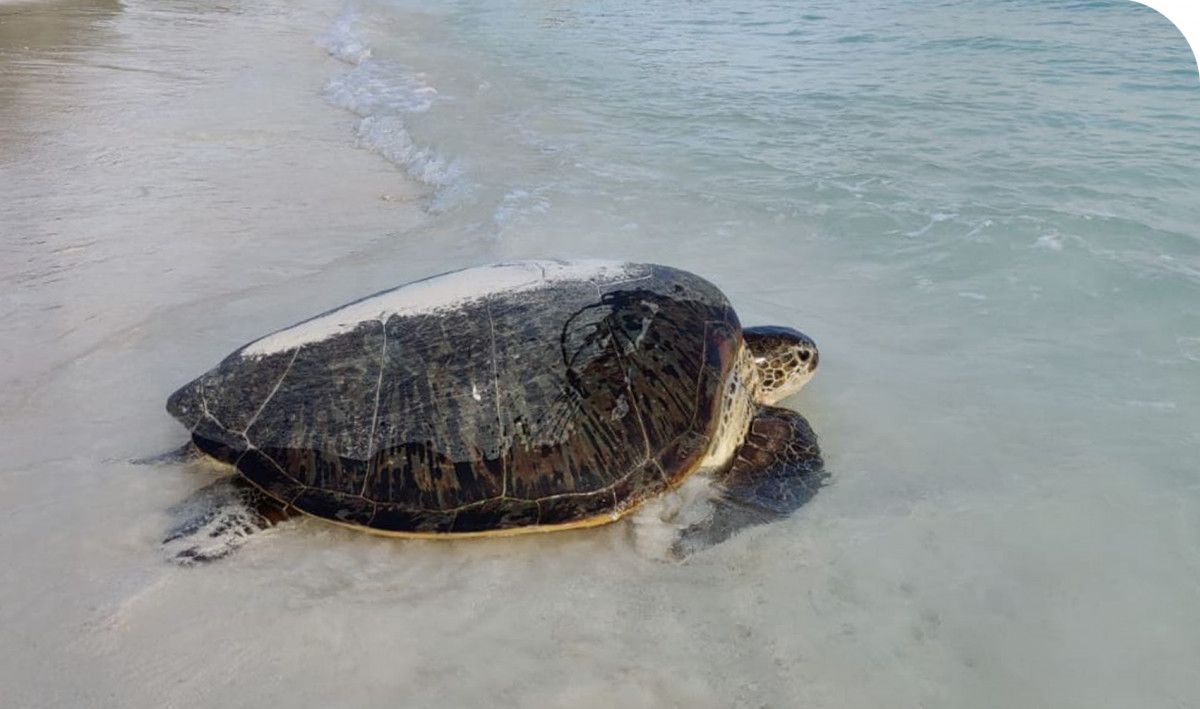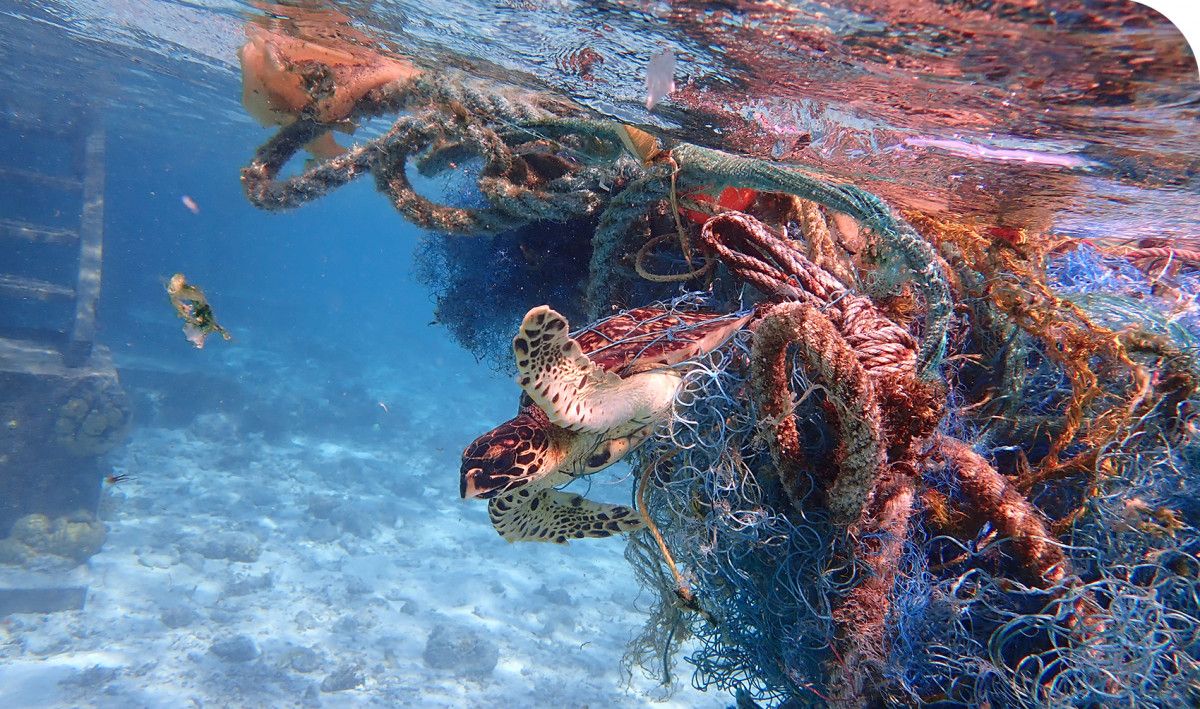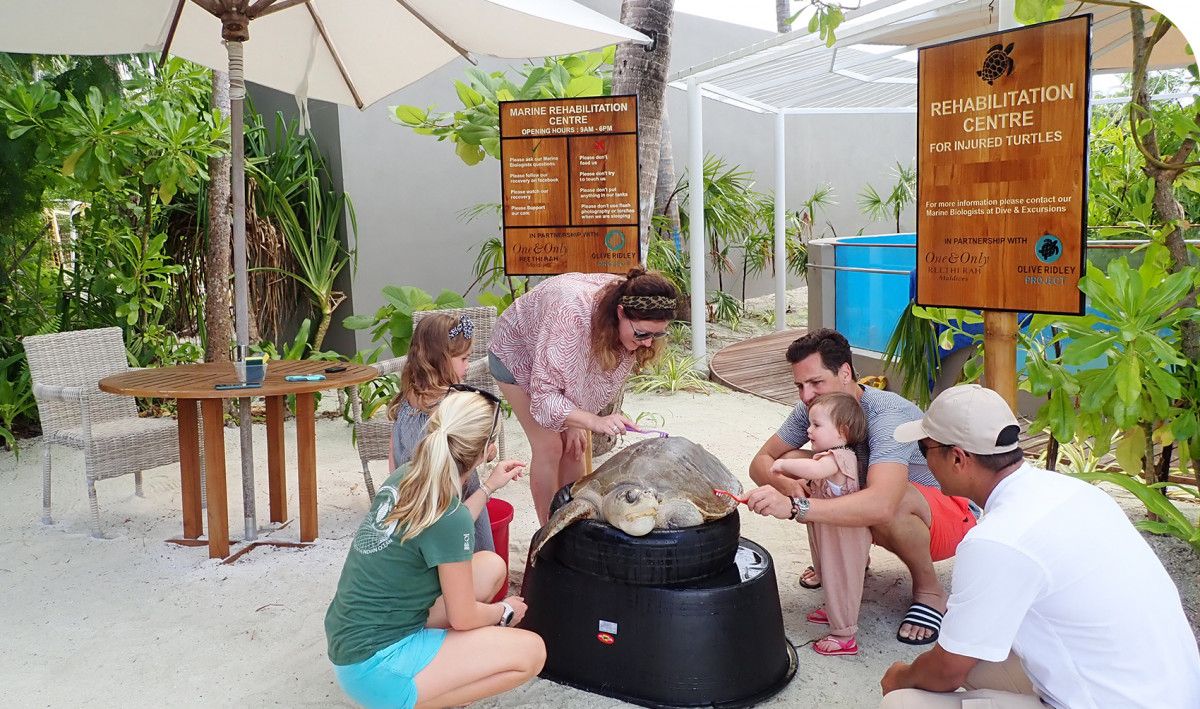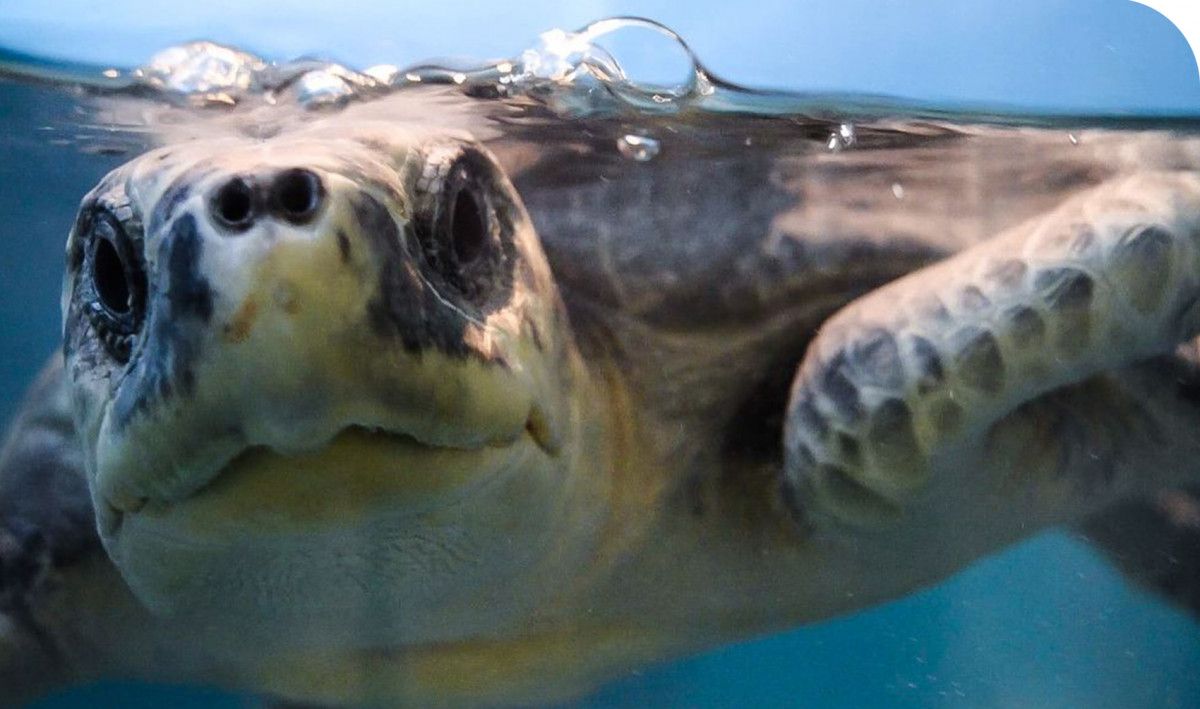Experience
Tips on swimming, encountering, and hanging out with turtles with our fictional guide Sam!

Hi, my name is Samantha, my friends call me Sam, and I am a fictional turtle here to guide you in all your turtle encounters whilst visiting the Maldives.
Plenty of my family members live or visit the Maldives frequently, as we love the marine ecosystem, which provides us with plenty of food, warm waters, and the company we meet. Unfortunately, not all our encounters are pleasant. Sometimes my family members come across a human while we are in distress. We mostly meet humans while we are feeding, chilling, or just passing by.
Either way, let me be your guide on how to make these encounters pleasant for us.

Oliveridleyproject, kuredu haisham
Now, we know, we are the coolest creatures in the 7 seas and many of you want to swim with us. But there are few do’s and don’ts when interacting with us. So, let’s get right into it.
“When you spot one of us, we would really appreciate it if you could approach us from the side, and please don’t swim above us, that makes us a little scared. We also don’t like loud noises and touching is a strict no, no. Personal space is really important for us and we don’t enjoy being chased! If you see one or a group of us swimming in a direction, napping, or eating, you best believe that we don’t want to be interrupted. Speaking of meals, please don’t feed us. We know you mean well, but we rather fix our own meals.”

Now we know that besides meeting us at sea, some of you all are blessed to witness us on land, while contributing to the circle of life a.k.a nesting. On land, we are vulnerable. But it is a step we need to take to procreate and leave our eggs in nests, hoping humans would help us protect our hatchlings. There have been rather unfortunate events during which intentionally, or unintentionally, our nesting grounds have been disturbed in different ways, killing hundreds of our children. So let me tell you how we can prevent this.

“When and if you see a turtle coming up the beach, keep your distance, turn off any lights, make as little noise as possible, and crouch down low. The best thing to do is leave the area and let it be. Chances are that it’s a baby mama, and she is on her way to nest. If your curiosity won’t let you leave, we would really appreciate some privacy, so please don’t come close, interrupt our trail, don’t touch us, or try to carry us. Bright lights and flash photography/videography also distresses us. The only situation where you can touch us is to redirect us to the ocean if you think we are heading inland rather than to the sea.”
All we ask for is a basic respect and support to help protect our nests and see that our hatchlings get to the ocean safely once they hatch. The chances of survival for most baby turtles are low enough as it is when they get to sea, so the least you could do is ensure they face no harm on land at least. As for our hatchlings, we know, they are super cute. But like any other baby, there is a process that has to be respected when you come across us.
“Just like for us adults, please turn off your bright lights and flashes, watch your step, and do not handle hatchlings unless advised otherwise by a qualified person, and even then, only when we need help. For instance, only re-direct or touch them when the babies are heading away from the ocean. If you find hatchlings that appear disoriented or have gone inland, gently rotate the hatchlings to face the ocean and seek professional help if necessary.”

Now one question posed by many humans is what they can do if they come across entangled or injured sea turtles and how to rescue them? I want to refer to the guide on this created by the Olive Ridley Project. According to ORP’s Code of Conduct for Sea Turtle Rescue;
“When encountering an entangled or injured turtle it’s important not to drag the turtle in the water, try to disentangle the turtle in the water, pick up the turtle by its head or flippers. Please do not leave the turtle on its back or throw the turtle back into the sea. Don’t release the turtle if it has open wounds or cannot dive. And if you encounter a sea turtle that is entangled or injured, their veterinary team is available 24/7 to help at 9552205.”
Now, besides being entangled in a net, there are other circumstances where we are in distress, but identifying the signs can be difficult. Let’s see what ORP says about this.
“Apart from the very obvious sign of fast flight, sea turtles show their discomfort first by stopping, then abandoning their activity, such as feeding or resting, when stressed. Often, they get a breath of fresh air as preparation for a fast retreat if needed. Overall, an increased breathing rate is a sign of stress, which we can also see in entangled turtles.”

If you see a turtle that may need critical care there are few rescue centres across Maldives that can help the injured. ORP currently operates the Marine Turtle Rescue Centre with a fully equipped clinic at Baa Atoll, and a Sea Turtle Rehabilitation Centre in North Malé Atoll. Good news is that more rehabilitation centres are opening in Noonu and Raa Atoll soon. Besides ORP, local NGO Naifaru Juvenile runs the Atoll Marine Centre, a rescue and rehabilitation centre, in Lhaviyani Atoll. Marine Savers also operate Turtle Rehabilitation Centres in North Male’ and Baa Atoll.
So, if you ever come across a turtle that needs special care, please contact these amazing people, who care so much about us. Anyway, I hope this Sam-Guide gave you insights on swimming with us turtles, caring for nesting turtles or our babies, and helping an injured turtle.
Oh, and before I forget, you can also volunteer on a daily or monthly basis at some of the rehab centres for turtles, assisting in the recovery of the distressed or injured. Now, isn’t that a wonderful way to spend a day or two in the Sunny Side of Life?

I’ve got to go now but I hope my guide helps you to better co-exist and appreciate my extended family members you come across while diving, snorkelling, or simply walking on the beach in the Maldives.